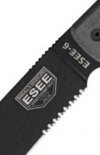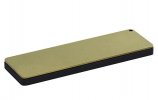DocJD
Basic Member
- Joined
- Jan 29, 2016
- Messages
- 12,181
Serrations can be very useful for fast , easy slicing flexible tough fibrous materials .
But longer , fully serrated blades , work much more efficiently , than short or partially serrated .
Serrations will continue to useably cut longer than PE (other factors being equal ) , but will start to tear rather than slice cleanly as they dull .
They are also a PITA to sharpen , some worse than others ( looking at you Cold Steel !) .
SE tend to be more fragile and easily damaged by chopping/ baton or other hard use .
But longer , fully serrated blades , work much more efficiently , than short or partially serrated .
Serrations will continue to useably cut longer than PE (other factors being equal ) , but will start to tear rather than slice cleanly as they dull .
They are also a PITA to sharpen , some worse than others ( looking at you Cold Steel !) .
SE tend to be more fragile and easily damaged by chopping/ baton or other hard use .



